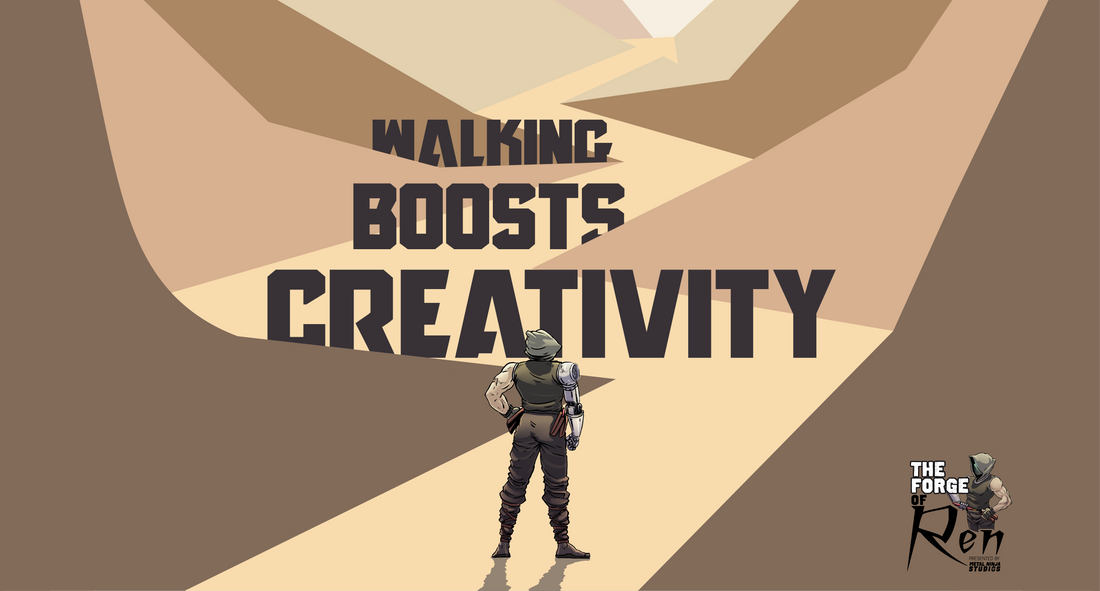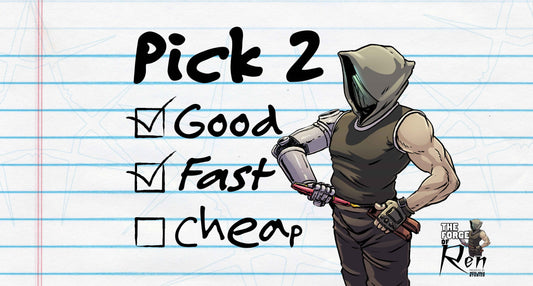Why Walking is the Ultimate Creativity Booster
Introduction
Have you ever noticed how some of your best ideas come to you while you're on a walk? There's a reason for that. Walking isn't just good for your body—it's a powerful tool for unlocking creativity. From writers and artists to entrepreneurs and problem-solvers, many of history's greatest minds have sworn by the creative power of walking.
Steve Jobs was famous for his walking meetings. Charles Dickens took long walks through London while working on his novels. Beethoven started each day with a stroll. Dan Martell, author of Buy Back Your Time, often holds meet-ups and meetings while on hikes to spark creativity and manage his time. The connection between movement and creativity has long been recognized, and modern science now backs it up with research.
So, what is it about walking that fuels creative thinking? Let's dive into the reasons why putting one foot in front of the other can help you break through mental blocks, generate fresh ideas, and boost your creative output.
The Science Behind Walking and Creativity
In 2014, researchers at Stanford University conducted a study that confirmed what many creatives have known intuitively—walking enhances creative thinking. The study, led by Marily Oppezzo and Daniel Schwartz, found that people who walked instead of sitting experienced a 60% increase in creative output.
The reason? Walking improves blood flow to the brain, delivering more oxygen and nutrients that enhance cognitive function. At the same time, movement triggers the release of dopamine, a neurotransmitter associated with motivation and creative problem-solving.
This combination of increased brain activity and mood enhancement creates the perfect conditions for generating fresh ideas and approaching problems from new angles.

Walking Breaks Mental Blocks and Encourages Free Thinking
Creative roadblocks are frustrating. Sometimes, staring at a blank page or screen only worsens the problem. This is where walking can make a difference.
When you walk, your brain shifts into "diffuse thinking" mode, which is the opposite of deep, focused concentration. Instead of forcing a solution, your mind makes subconscious connections, allowing new ideas to bubble up naturally.
Have you ever had an "aha" moment in the shower or while doing something mundane? That's diffuse thinking at work. Walking provides the same mental reset, freeing space for insights to surface when you least expect them.
Environmental Changes Spark New Ideas
Another reason walking enhances creativity is that it gets you out of your usual environment. When you move from one place to another, your brain is exposed to new stimuli—sights, sounds, smells, and sensations—that can trigger unexpected ideas.
Walking through a park, for instance, might inspire a nature-themed story or artwork. A bustling city street could spark ideas for a dynamic scene or innovative business strategy. Movement alone can shift your perspective even if you're pacing around your home.
A meta-analysis published in BMC Public Health found that spending time in nature can reduce stress and improve mental clarity, further enhancing creative thinking (Bowler et al., 2010). Take your walks outside and let the change in scenery do its magic.
Walking Enhances Mindfulness and Reflection
Walking isn't just about movement; it's also a form of mindfulness. Many creatives use walking as a time to reflect, process emotions, or simply clear their heads. This is why walking meetings have become popular—when you're moving, conversations flow more naturally, and ideas unfold more organically.
Steve Jobs preferred walking meetings because they allowed uninterrupted thought and deeper discussions. You don't need a business meeting to benefit from them, though. Whether brainstorming a project, reflecting on a challenge, or just letting your mind wander, walking provides a structured yet open-ended space for creative thinking.

The Habit of Walking for Everyday Creativity
One of the best things about walking is its accessibility. You don't need special equipment or skills—just a pair of comfortable shoes and a willingness to move. The key to making walking a creativity booster is consistency.
Here are a few ways to incorporate walking into your daily routine:
- Start your morning with a short walk to set a creative tone for the day.
- Use walking breaks to refresh your mind between creative tasks.
- Take an evening walk to process the day's ideas and insights.
- Keep a voice recorder or notes app handy to capture thoughts on the go.
Making walking a habit creates a daily space for inspiration, ensuring that creativity remains a constant in your life.
The Connection Between Walking and Lateral Thinking
Beyond boosting creativity, walking also strengthens lateral thinking, which is the ability to approach problems from unconventional angles. Studies suggest that when you walk, both hemispheres of your brain become more active, improving your ability to make unique connections between seemingly unrelated ideas.
Historical figures like Nietzsche and Aristotle were known for their long philosophical walks, using movement to enhance their reasoning and problem-solving abilities. Whether you're a writer, artist, entrepreneur, or creative thinker, walking can help you see challenges from new perspectives and generate solutions you might not have considered otherwise.

Conclusion
Walking isn't just about movement—it's about unlocking new ways of thinking. Research shows that walking enhances brain function, fosters creativity, and breaks mental blocks. By stepping away from your workspace and into motion, you allow your brain to shift gears, encouraging fresh ideas and unexpected insights.
Incorporating walking into your routine doesn't require a significant time commitment. A short walk in the morning, a mid-day stroll, or an evening walk through your neighborhood can provide clarity and inspiration. Walking outdoors, in particular, exposes you to new environments and stimuli, further enhancing creative thinking.
So the next time you find yourself stuck on a problem, don't stay glued to your desk. Lace-up your shoes, head outside, and let your creativity take a step forward. Your best ideas might just be a walk away.
What are your thoughts? Have you experienced a creative breakthrough during a walk? Let us know in the comments!
References
- Oppezzo, M., & Schwartz, D. L. (2014). Give Your Ideas Some Legs: The Positive Effect of Walking on Creative Thinking. Journal of Experimental Psychology: Learning, Memory, and Cognition. https://www.apa.org/pubs/journals/releases/xlm-a0036577.pdf
- Bowler, D.E., Buyung-Ali, L.M., Knight, T.M. et al. A Systematic Review of Evidence for the Added Benefits to Health of Exposure to Natural Environments. BMC Public Health 10, 456 (2010). https://doi.org/10.1186/1471-2458-10-456




